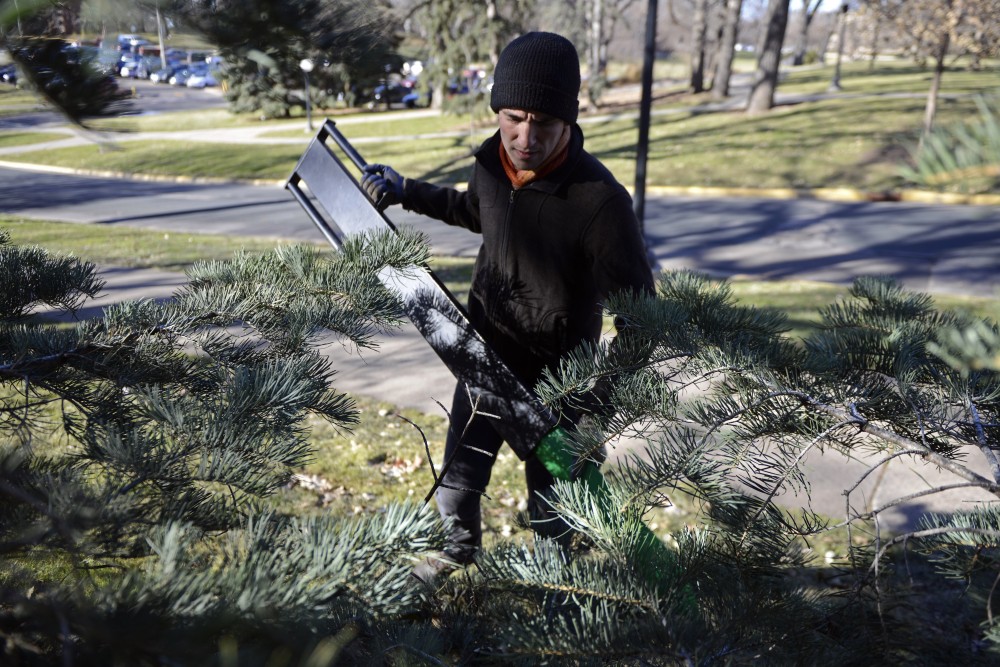Around 80 trees on the University of Minnesota’s St. Paul campus now have their own labels that identify their names, native environments and distinctive characteristics.
The labels, which were fully installed last week, are part of the Campus Trees Project, a nearly two-year-long project developed by graduate students and faculty in the Department of Horticultural Science and the Department of Forest Resources.
Each label provides a QR code that links users to a website with more descriptive, in-depth information.
Jared Rubinstein, an Applied Plant Sciences graduate student, led the project, which started in 2016. The labels are key for making forestry research on the St. Paul campus more tangible, he said.
“[The project is] a way to connect our research with actual things,” Rubinstein said. “A lot of research that horticulturalists and foresters and ecologists do can feel really abstract… the idea is that we can say, ‘This is what we’re actually researching. This tree in front of you is the focus of what goes on inside that building.’”

Rubinstein collaborated with former graduate student Emily Ellingson and former University forestry professor Eric North to plan and develop the project.
“The idea is to have a couple of different paths of entry,” Rubinstein said, adding that anyone from a state fair-goer to a forestry professor can use the signs.
Although the idea had been discussed in the Forestry Department before, “Jared was really the one who came up with this idea … and followed through on it,” North said.
Rubinstein said he received a $3,000 grant from the Institute on the Environment in spring 2016 to purchase the project materials — posts, custom printed stickers and installation tools.
Rubinstein, North and Ellingson used the University’s land care map as a baseline. They weighed their own knowledge, trees’ locations and their physical states when deciding which trees to label.
“The University has a really awesome resource in the University of Minnesota Landscape Arboretum, but that’s kind of a drive. This is a way to bring more education to campus, to students on a regular basis and to anyone who visits the campus,” Ellingson said.
Rubinstein spent 2016 and spring 2017 writing and editing labels and creating websites for each species. He began installing the signs this past summer.
“Lots of people know nothing about trees and they think about them as green wallpaper,” said Emily Hoover, horticulture professor and department head. “[This project] will at least elevate some of the trees so that people say, ‘Oh, wow. I didn’t know that was a Black Alder.’”
Although Rubinstein is graduating in the spring, he hopes future students will expand the project to the University’s East and West Bank.







